Frank ICSE Solutions for Class 10 Chemistry – Electrolysis
PAGE NO : 131
Solution 1:
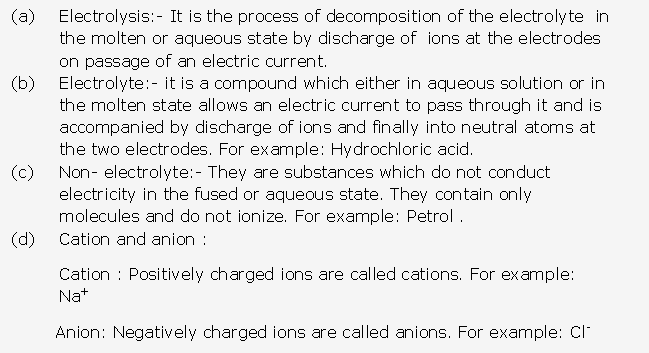
Solution 2:

Solution 3:
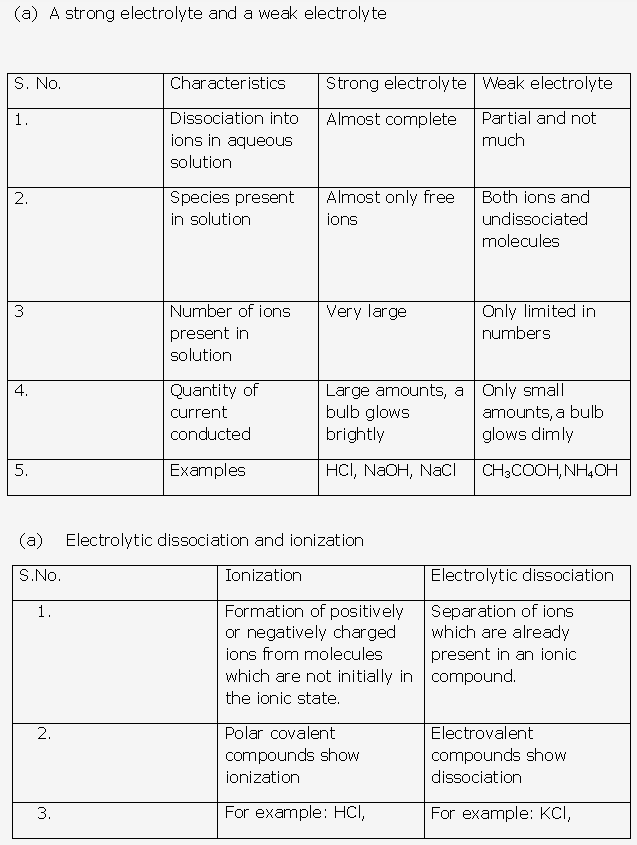
Solution 4:

Solution 5:
Three appilications of electrolysis are:
- Electro plating with metals
- Electrofining of metals
- Extraction of metals
Solution 6:
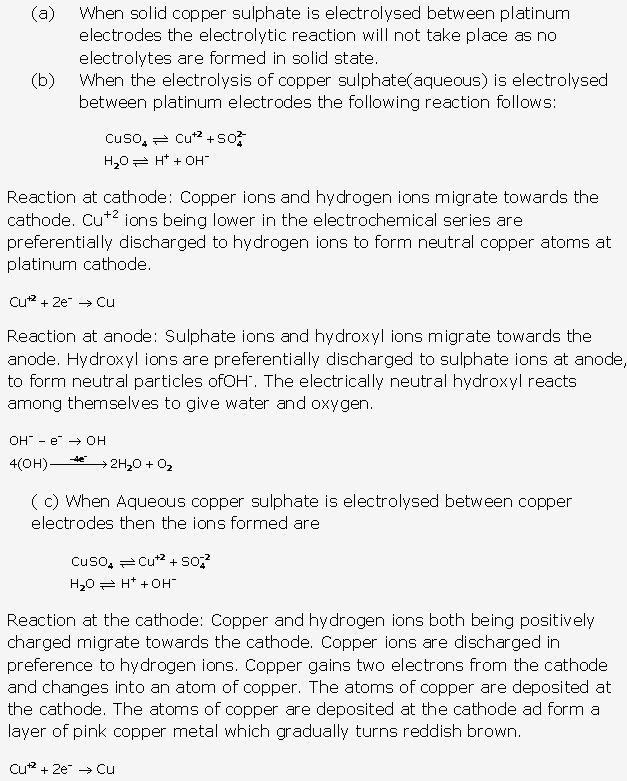
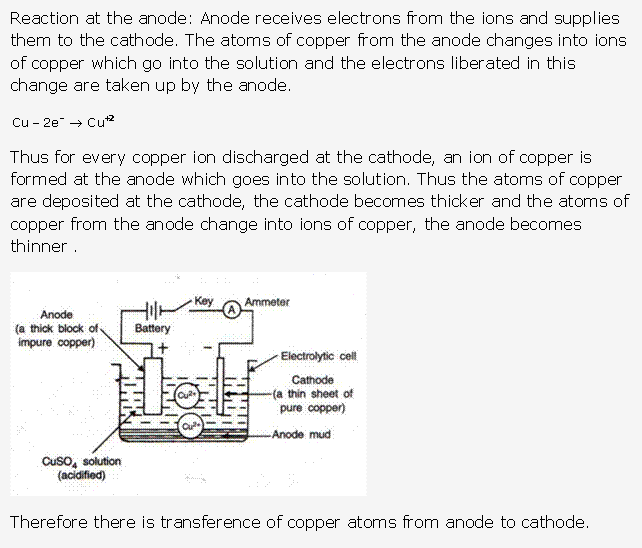
Solution 7:
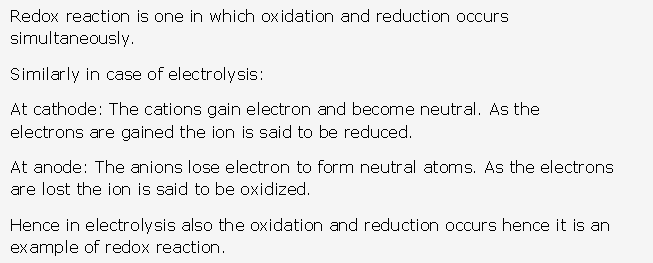
Solution 8:
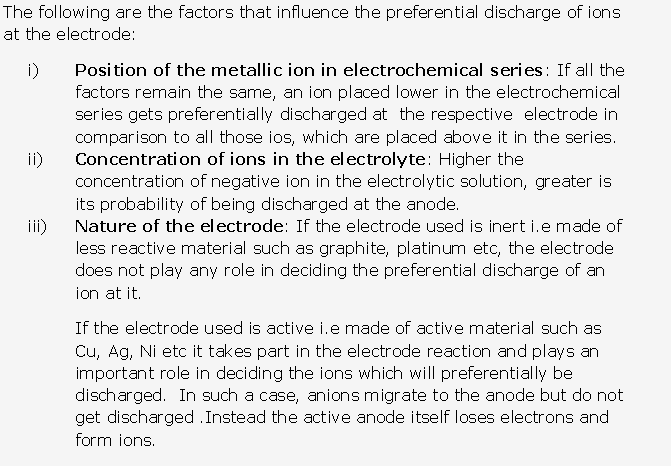
Solution 9:
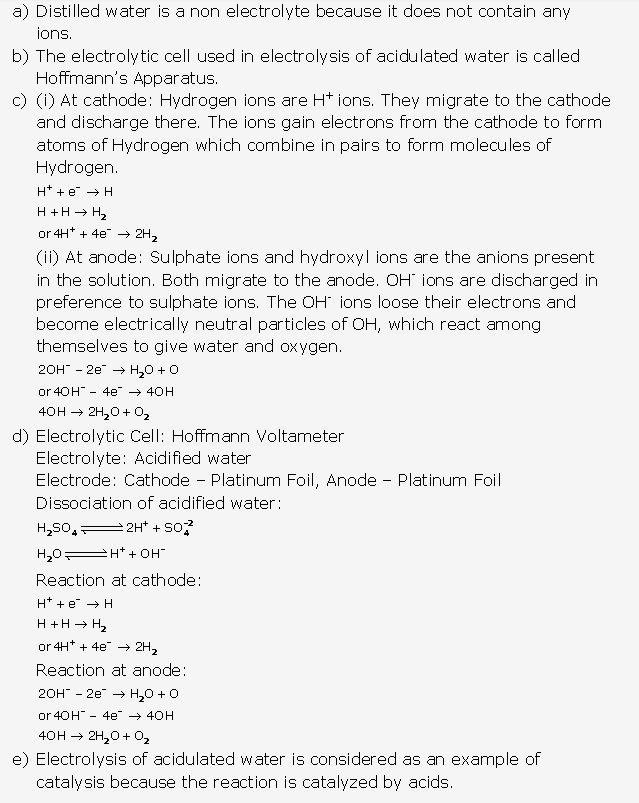
PAGE NO : 132
Solution 10:
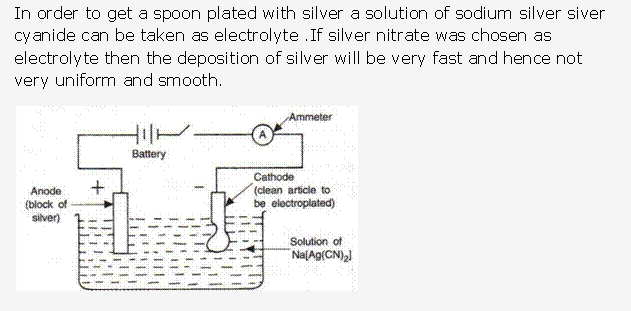
Solution 11:

Solution 12:
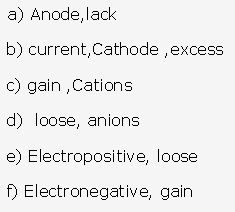
Solution 13:

Solution 14:

Solution 15:

Solution 16:
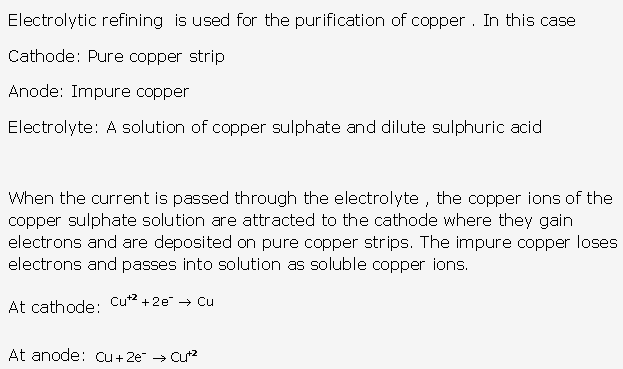
Solution 17:
The main appilications of electrolysis are:
- Electro plating with metals
- Electrofining of metals
- Extraction of metals
Solution 18:

Solution 19:

Solution 20:
- Na2CO3
- NH3
- Graphite, Cu electrode
- NH4+
- Graphite
PAGE NO : 133
Solution 1994-1:
- The article to be plated must be made Cathode.
- The ions of the metal which is to be electroplated must be present in the electrolyte.
- The metal to be plated on the article must be made anode. It needs to be periodically replaced.
Solution 1994-2:
The passage of electricity through an electrolyte occurs through ions furnished by the electrolyte where as the passage of electricity through a copper wire occurs through electrons.
Solution 1995-1:

Solution 1995-2:
It is the process of decomposition of an electrolyte in the molten or aqueous state by discharge of ions at the electrodes on the passage of an electric current.
Solution 1995-3:
Pure water does not conduct electricity because the degree of ionization is low. Thus to make it a good conductor of electricity acid is added to it which will increase the degree of ionization.
Solution 1996-1:
Substance which contain
- Ions only:- HCl
- Molecules only:- Petrol
- Both ions and molecules:- CH3COOH
Solution 1996-2:
- Electrolyte is a compound which either in aqueous solution or in molten state allows an electric current to pass through it and is accompanied by discharge of ions and finally into neutral atoms at the two electrodes.
- Non- electrolyte are substances which do not conduct electricity in fused or aqueous state. They contain only molecules and do not ionize. For example: petrol, alcohol.
- If the electrolyte is described as ‘strong electrolyte’ it means it completely dissociates into its constituting ions in aqueous solution.
Solution 1996-3:
- As for every copper ion discharged at the cathode, an ion of copper is formed at the anode which goes into the solution .Since atoms of copper are deposited at the cathode, the cathode becomesthicker and as the atoms of copper from the anode change into ions of copper, the anode becomes thinner.
- When platinum rods are used as electrodes, then x the blue colour of copper sulphate solution fades and sulphuric acid is formed. This is because oxygen is liberated at anode and copper metal is deposited at cathode
- Practical application of electrolysis of copper sulphate solution: This is the basis for purification of copper.
Other metals like Zinc, Nickel, Silver .Lead can also be purified.
Solution 1997-1:
Lead Bromide should be in the molten state if it has to conduct electricity.
Solution 1997-2:

Solution 1997-3:
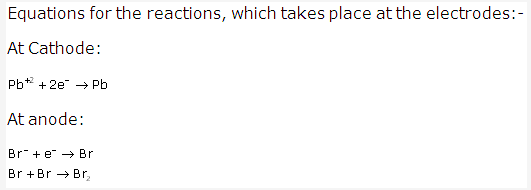
Solution 1998-1:
- Electrolyte
- Nickel
- Cathode
- Anode
- Cations
PAGE NO : 134
Solution 1999-1:
The electrolysis of lead bromide liberates lead at cathode and bromine at anode.
Solution 1999-2:
When a fused metallic chloride is electrolyzed, the metal is obtained at cathode.
Solution 2000-1:
- Strong electrolytes – dilute hydrochloric acid, dilute sulphuric acid, Ammonium chloride
- Weak electrolyte – Acetic acid, Ammonium hydroxide
- Non-electrolytes – Carbon tetrachloride
Solution 2002-3:
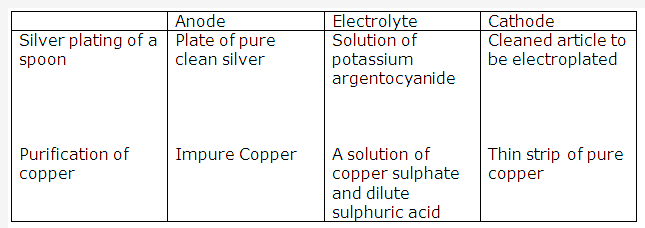
Solution 2002-1:
- molecules.
- will not
Solution 2002-2:
- When sulphuric acid is added to water it becomes good conductor as addition of sulphuric acid causes dissociation of water molecules into H+ and OH– ions which are then responsible for conduction of electricity by pure water. The water thus obtained is called acidified water.
- Cathode, Anode
Solution 2003-1:
electricity, chemical
Solution 2004-2
- Molecules are found in a liquid compound which is a non-electrolyte.
- Non ionized molecules;
- H+ and X– particles will be present in dilute solution.
- Loss, Gain
- The ions of the metal which is to be electroplated on the article must be present in a solution.
- Redox reaction is one in which oxidation and reduction occurs simultaneously.
- Similarly in case of electrolysis:
- At cathode: The cations gain electron and become neutral. As the electrons are gained the ion is said to be reduced.
- At anode: The anions lose electron to form neutral atoms. As the electrons are lost the ion is said to be oxidized.
Hence in electrolysis also the oxidation and reduction occurs hence it is an example of Redox reaction.
Solution 2004-1:

PAGE NO : 135
Solution 2005-1:
- Copper metal is solid and has no mobile ions whereas an electrolyte should dissociate into oppositely charged ions to conduct the electric current.
- Hydrogen is released at the cathode when acidulated water is electrolyzed.
- In sodium chloride, Na+ and Cl– ions are not free to carry the electric current.
- (a) Reduced
(b) Higher
Solution 2006-1:
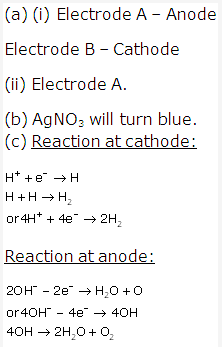
Solution 2006-2:
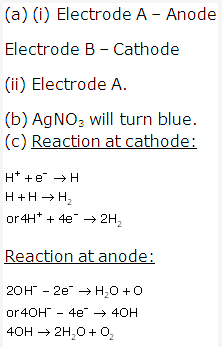
Solution 2007-1:
- Molten ionic compound – Strong electrolyte
- Carbon tetrachloride- Non-electrolyte
- An aluminium wire- Metallic conductor
- A solution containing solvent molecules, solute molecules and ions formed by the dissociation of solute molecules- weak electrolyte
- A sugar solution with sugar molecules and water molecules- Non-electrolyte
Solution 2007-2:
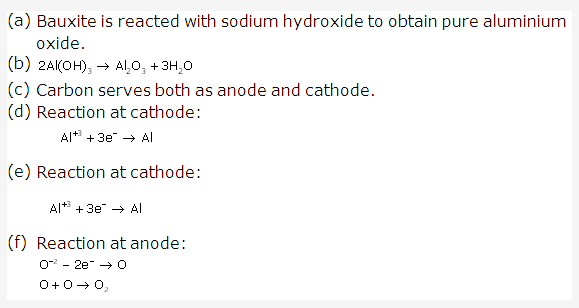
PAGE NO : 136
Solution 2008-1:
(d) Lead is deposited at the cathode
Solution 2008-2:

Solution 2009–2:
Mg (OH)2 as it is basic while rest are amphoteric.
Solution 2009–3:
Molten Lead bromide conducts electricity.
Solution 2009-4:
- Nickel ions move towards cathode.
- Nickel ions.
